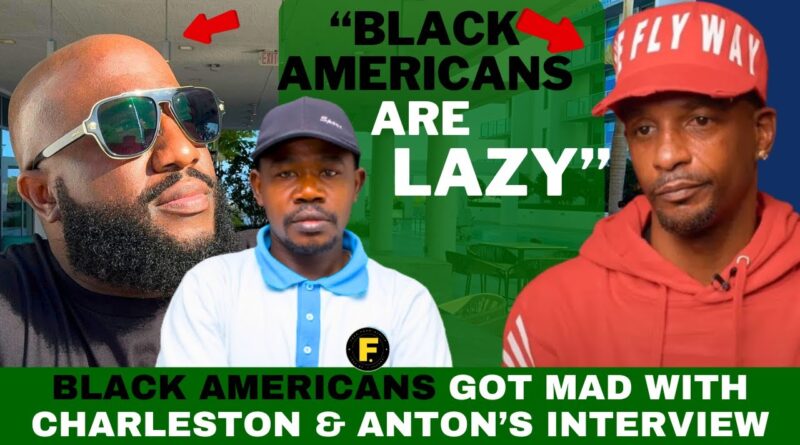“LAZY AFRICAN AMERICANS”: African Americans got mad with Charleston and Antons Interview
Subbscribe Now #capcut #africanews #aljazeera #fredfromafrica Africanamericans #subscribenow
Africa Americans Historical stereotyped
1. Minstrel Shows
Minstrel shows became a popular form of theater during the nineteenth century, which portrayed African Americans in stereotypical ways, some of the most common being that they are ignorant, lazy, buffoonish, superstitious, joyous, and musical.One of the most popular styles of minstrelsy was Blackface, where White performers burnt cork and apply shoe polish to their skin with the objective of blackening it and colour their lips, wearing woolly wigs, gloves, tailcoats, or ragged clothes to give a mocking picture of African Americans.This performance helped introduce the use of racial slurs for African Americans, including “darky” and “coon”.
2. Sambo & Golliwog
The character Sambo was a stereotype of black men who were considered very happy, usually laughing, lazy, irresponsible, or carefree.
The character found great popularity among other Western nations, with the Golliwog remaining popular well into the twentieth century.[clarification needed] The derived Commonwealth English epithet “wog” is applied more often to people from Sub-Saharan Africa and the Indian subcontinent than to African-Americans, but “Golly dolls” still in production mostly retain the look of the stereotypical blackface minstrel.
The term pickaninny, reserved for children, has a similarly broadened pattern of use in popular American theater and media. It originated from the Spanish term “pequeño niño” and the Portuguese term “pequenino” to describe small child in general, but it was applied especially to African-American children in the United States and later to Australian Aboriginal children.
3. Alligator bait Black children
A variant of the pick ninny stereotype depicted black children being used as bait to hunt alligators.Although scattered references to the supposed practice appeared in early 20th-century newspapers, there is no credible evidence that the stereotype reflected an actual historical practice.
4. Mammy
The Mammy archetype describes African-American women household slaves who served as nannies giving maternal care to the white children of the family, who received an unusual degree of trust and affection from their enslavers. Early accounts of the Mammy archetype come from memoirs and diaries that emerged after the American Civil War, idealizing the role of the dominant female house slave: a woman completely dedicated to the white family, especially the children, and given complete charge of domestic management. She was a friend and advisor.
5. Mandingo
The Mandingo is a stereotype of a sexually voracious black man with a huge penis, invented by White slave owners to promote the notion that Black people were not civilized but by nature. It has since been used to justify the subject of lazy black Americans.
The term mandingo is of 20th century origin; a corrupted word for the Mandinka peoples of West Africa, spanning from Mali, Guinea, Senegal, the Gambia, Côte d’Ivoire (or Ivory Coast), Ghana and Guinea-Bissau with minorities located in Sierra Leone and Liberia.
source

